Area tematica: Psicologia
ABSTRACT
Certain psychopathological aspects and specific diagnoses of four XX century dictators (Stalin, Mao, Hitler and Mussolini) are described, discussed and compared. Their childhood experiences, their attachment to parents, their education and their occupation prior to becoming dictators portray a relationship to becoming megalomaniac sadists. They were all narcissists and some were considered gods by the naive and unaware people they ruled even if all of them become involved in World War II where about 30 million of their citizens died. The article also briefly describes other dictators (Hosni Mubarak, François Duvalier, Muammar al-Gaddaffi, Alexander Lukashenko and Hugo Chàvez).
Five (5) key words: paranoia, narcissism, empathy, cult, omnipotent.
RIASSUNTO
Sono descritti, discussi e confrontati alcuni aspetti psicopatologici con diagnosi specifiche di quattro dittatori del XX secolo (Stalin, Mao, Hitler e Mussolini). Le loro esperienze infantili, il loro attaccamento ai genitori, la loro istruzione e la loro occupazione sono analizzati e messi in relazione con i loro caratteristiche sadiche e megalomaniche. Alcuni erano considerati delle divinità dal popolo convenientemente tenuto ignorante anche se coinvolti nella Seconda Guerra Mondiale dove morirono circa 30 milioni dei loro stessi cittadini. Inoltre, l‘articolo descrive brevemente ad altri dittatori (Hosni Mubarak, François Duvalier, Muammar al-Gaddaffi, Alexander Lukashenko e Hugo Chàvez).
Cinque (5) parole chiave: paranoia, narcisismo, empatia, culto, onnipotente.
At the time of the creation of the W.H.O. (World Health Organization) in 1948, health was defined as ― a state of complete physical, mental, and social well being and not merely the absence of disease or infirmity”. Moreover, mental health was more than the absence of mental disorders, but ―a state of well being in which the individual realizes his or her own abilities, copes with the normal stresses of life, works productively and fruitfully, and makes a contribution to his or her community‖.
Thus, mental health is determined by multiple and overlapping cultural, social, psychological, and biological factors.
Is there a relationship between mental health and the political system that governs countries? To what extent is this relationship a strong one?
Dictators are usually charismatic and intelligent individuals who are extremely self-absorbed and pitiless, portraying their self-confidence and independence. Psychological, cultural, environmental, economic and political factors made them become tyrants who according to the Greek philosopher Plato (427-347 BC), are governed by insatiable desire for power which is maintained by engaging in injustices.
Dictatorship is characterized by having absolute sole power over people, and this power is usually used in a cruel way. However, a dictator disrespect basic, political, socioeconomic, and cultural human rights which are fundamental to mental health.
The glorification of a dictator has been called the cult of personality. At its heart lies a paradox: the modern dictator must create the illusion of popular support or consent by by rigging the electoral system. He must rely on military forces, a secret police, a praetorian guard, spies, informants, interrogators and torturers.
Many dictators suffer from manic-depressive disorders, paranoia and delusions of omniscience and omnipotence. They are usually ruthless, intolerant of criticism and indifferent to the suffering of others.
By considering a range of 20th-century dictators, Benito Mussolini (1883- 1945) of Italy is described as a surprisingly hesitant individual, camouflaged as invincible; Mao Tse-tung (1893-1978) of China, as a man who worshiped and adored himself, blamed others for his failures and took credit for success; Joseph Stalin (1878-1953) of USSR wanted people to be passively obedient to him; François Duvalier (1907-1971) of Haiti, AKA ― Papa Doc thought he was God on earth.
They are quite capable of deceiving others: Gandhi thought Mussolini was ― one of the greatest statesmen of our time; Lloyd George in 1936, declared that Adolf Hitler (1889-1945) was the ―George Washington of Germany; George Bernard Shaw insisted that there was ― no malice in Stalin.
Acutely suspicious of others, they surrounded themselves with flatterers: Mussolini trusted no-one; Stalin had no friends and no allies; Duvalier had many yes-men around him.
Personality psychologists Frederick L. Coolidge and Daniel L. Segal from the University of Colorado wrote that “Jung said Hitler never laughed, and it appeared as if Hitler was sulking and in a bad mood. Jung viewed him as sexless and inhuman, with a singleness of purpose: to establish the Third Reich, a mystical all-powerful German nation, which would overcome all of Hitler’s perceived threats and previous insults in Germany’s history.” Hitler inspired in Jung only fear. By contrast, Mussolini apparently came off to Jung as an “original man,” who had “warmth and energy”.
In 2007, these psychologists “…rounded up five experts on Hitler, and asked them to evaluate him on the basis of DSM-IV psychopathological syndromes and personality disorders. The consensus … was that Hitler had highly elevated scores on the following personality disorder scales: paranoid, antisocial, narcissistic, and sadistic. Hitler’s derived personality profile also suggested that he probably had schizophrenic tendencies, including excessive grandiosity and aberrant thinking. ―In another 2007 study, Coolidge and Segal gave the same treatment to Saddam Hussein (1937-2006) of Iraq. Just as with Hitler, they derived a consensus personality profile for Hussein based on informant reports from eleven Iraqi adults who „knew Hussein intimately‟ for a median of 24 years. The study revealed that Hussein had high scores on the same personality disorder scales: paranoid, antisocial, narcissistic, and sadistic, though sadistic features were stronger in Hussein than in Hitler. Like Hitler, the Hussein study revealed probable schizophrenic symptoms as well. There was a relatively high correlation (0.79) between the derived personality profiles for the two men‖. 1
In 1943, the Office of Strategic Services of the CIA, commissioned Henry A. Murray of the Harvard Psychological Clinic to evaluate Hitler’s personality based on remote observations. In an unsparing 240-page assessment, Murray and his colleagues concluded that Hitler was an insecure, impotent, masochistic, and suicidal neurotic narcissist who saw himself as ― the destroyer of an antiquated Hebraic Christian superego. It was also agreed that his personality developed in an effort to overcome early disabilities, weaknesses and humiliations (wounds to his self-esteem), and to revenge injuries and insults to pride.
The report stated that Hitler had suffered from ―hysterical blindness‖ while he was a soldier in World War I. ―This psychosomatic illness was concomitant with the final defeat of Mother Germany, and it was after hearing of her capitulation that he had his vision of his task as savior‖. It also reported that he was a full-fledged masochist. The dossier predicted eight possible finales for the Führer, including going insane, sacrificing himself in battle, contriving to be killed by a Jewish assassin, and committing suicide: ―Hitler has often vowed that he would commit suicide if his plans miscarried; but if he chooses this course he will do it at the last moment and in the most dramatic possible manner…” 2
Libya’s Muammar al-Gaddafi (1942-2011) was paranoid, narcissistic, power- hungry, and vain; Belarus’s Alexander Lukashenko (b.1954) was among the world’s most dangerous dictators; he actively attacked his opposition, a clear sign of malignant psychopathic megalomania. Venezuela’s Hugo Chávez (1954- 2013) was paranoid, narcissistic, power-hungry, and vain.
Narcissistic individuals have a “greatly exaggerated sense of their own importance” and are preoccupied with their own achievements and abilities. They see themselves as ―grandiose‖, have difficulty empathizing with the feelings and needs of others (lack empathy) and tend to be vindictive. This becomes so serious that it interferes with daily life.
There are two forms of narcissism: grandiose and vulnerable associated with an “insecure grandiosity”, which seems to produce intense defensiveness and feelings of inadequacy. Such individuals are often described as being worrying, emotional, defensive, anxious, bitter, tense, and complaining.
Many believed in the cults of Stalin, Mao, Hitler and Mussolini. People had to acclaim their leaders and shout party slogans on command. ― The purpose of the cult was not to convince or persuade, but to sow confusion, destroy common sense, enforce obedience, isolate individuals and crush their dignity. People had to self-censor and in turn they monitored others, denouncing those who failed to appear sufficiently sincere in their professions of loyalty. 3
These components can be so extreme that narcissistic personality disorder can be misdiagnosed as borderline personality disorder, which is associated with high levels of anxiety. The intensity of the emotional experiences produced by narcissism in combination with actual dangers could produce remarkable levels of anxiety, worry, and uncertainty.
Anatomically speaking, the amygdala is a major center for the circuits that mediate “animal instincts” and regulate fear, rage, and sexual desire and emotional memory. At the bottom of the brain’s lower frontal lobe, the orbital, the ventromedial prefrontal and anterior cingulate cortex, there is a circuit that is usually damaged in the psychopathic dictator, where aggressive impulses originating in the amygdala are inhibited and moral and ethical choices considered. Both the frontal lobe and the amygdala connect with each other, in the nucleus accumbens. Thus, the psychopathic murderers show functional loss in the orbital and ventromedial cortex of the frontal lobe, the anterior-medial temporal lobe especially in the amygdala.
However, there are other genetic and chemical factors that may need to be present to breed a cold-blooded murderer. The warrior gene or MAO-A (monoamine oxidase A) which is more prevalent in men, may also play a role in psychopathic murderers and is transmitted from mother to child through the X chromosome. Women have two X chromosomes where one is inactivated and thus, it is no coincidence that all dictators are men.
To develop into a dictator, both genetics and the environment play a role. An individual that has been seriously abused in childhood, and/or lost important caretakers, such as biological parents, is at risk of becoming an aggressive psychopath.
Totalitarian dictators seek to maintain complete control over their respective governments and populations through radical methods, including the systematic murder, imprisonment, torture and forced labor of all opponents. Yet, they feared someone might murder them.
JOSEPH STALIN
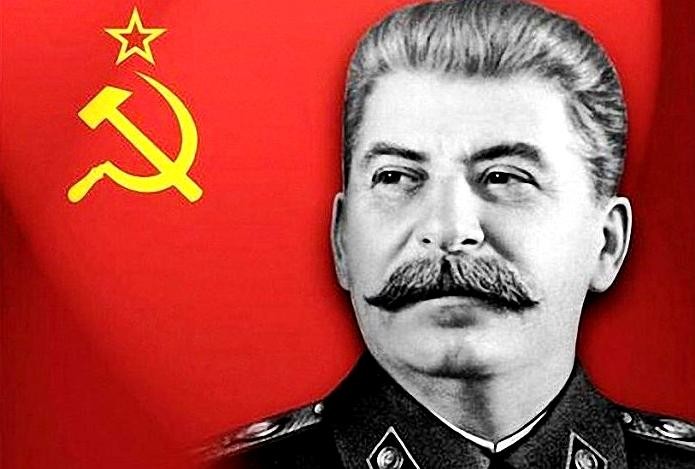
Joseph Stalin (1878-1953), born to a poor family in Georgia, as a young child underwent severe physical and psychological distresses that affected his adult life.
His father Vissarion (Beso) Djugashvili was a cobbler and an alcoholic, a violent man who was killed in a bar fight. Stalin feared him because he was abused physically and verbally and his violent tendencies developed in part because of his father‘s behavior. Moreover, during his childhood he suffered from smallpox, a deformed arm, and an extremely dysfunctional family, important details to understand Stalin‘s mental state later in his life.
He had no brothers or sisters and his mother Yekaterina Geladze was an illiterate woman who did not love him as he had wished. She forced him to attend a Seminary in Tbilisi from which he was expelled due to his poor performance and for reading books on Marxism. In the seminary, he saw the double standards of priests and found nothing sacred in life. His mother used to work in David Pismamedov‘s house, a Jewish businessman in Gori and some residents.
Young Stalin had a negative self image and was plagued by the inferiority complex. His face was badly scarred by smallpox, his left arm was shorter than the other and half-paralyzed had a defect in his left arm.
In his entire life Stalin struggled to overcome his negative self image and inferiority complexes by inflating defensive high self-esteem. He lacked empathy. When his first wife Ekaterina Svanide AKA ―Kato died of typhus, Stalin was emotionally devastated. After this heartbreaking event Stalin became emotionally numbed and said to his friends ―my last warm feelings for humanity died”. This emotional numbness became the central feature of his character. He abandoned his first born infant child Yakov Dzhugashvili. He probably suffered from malignant narcissistic syndrome with an extreme lack of empathy, elements of sadism and paranoid tendencies.
He organized many armed robberies to raise funds for the party, was arrested for revolutionary activities and exiled to Siberia. There he underwent awful human conditions which further deteriorated his emotional well-being but he managed to escape in 1904.
We worked with the Bolsheviks as a pragmatic activist and was highly manipulative. Stalin was able to win Lenin’s trust since he had organizational skills and was a hard worker. He used ruthless measures during the Russian Civil War earning a fearsome name. He was rude, intolerable and had a bad temper.
In 1924, Lenin wrote to the Central Committee that Stalin must be removed from the post of General Secretary of the Communist Party of the USSR and be replaced by someone else who was ― more loyal, more courteous, and more considerate of comrades, less capricious.
But this decision was overruled by Stalin with the help of his supporters in the Politburo.
After Stalin became the leader of the Soviet Union, he eliminated any person who could be a potential threat and used numerous unorthodox methods to suppress his opponents. Stalin‘s jealousy and insecurity grew vastly, he saw Leon Trotsky (1879-1940) as a potential threat and ordered his exile in 1929 and his assassination in 1940.
From 1924 to 1953 he was a dictator of the Soviet Union, became a purger of his own party as he instituted the “Great Purge” where over a million were imprisoned and at least 700,000 executed. He purged more than 40,000 Red Army Officers, some were active participants of the 1917 Bolshevik Revolution and heroes of the Russian Civil War. No member of Soviet society was left untouched by these purges, which brought down countless numbers of diplomats, writers, scientists, industrial managers, scholars, and officials of the Comintern.
The Revolutionary intellectual Nikolai Bukharin (1888-1938) once stated:
Stalin is a Genghis Khan, an unscrupulous intriguer, who sacrifices everything else to preserve power.
Stalin encountered series of identity crisis throughout his life probably due to insecurities that vastly affected him. In his young days he adopted the name Koba (a Georgian fictional hero) then Stalin (man of steel), Thavarish Stalin (Comrade Stalin), Vileki Stalin (Great Stalin), Nash Vilekei Voshd (Our Great Leader) and finally Otsa Narodov (Father of the Nation). He was troubled by his Georgian heritage while ruling the Russian masses. He spoke Russian with a thick notable accent. Even his short stature (165 cm) was compensated for by wearing built-up shoes.
His defensive high self-esteem created a new cult in the Soviet Union. Stalin‘s picture replaced the God‘s image, he became a Demigod and launched anti-religious campaign against the Russian Orthodox Church. His image appeared in many portraits, posters, statues, films, plays, songs, and poems.
―Art had to glorify the revolution. Since Stalin was the embodiment of the revolution, his posters, portraits, busts and statues appeared everywhere. Five cities were named after him, as well as parks, factories, railways and canals. The constitution, passed at the height of the show trials in December 1936, was called Stalin‟s Constitution. In his final days, sensing that the end was imminent, he began self-deification. In July 1951 – between purges – he commissioned a statue of himself from 33 tonnes of bronze‖. 4
Stalin attempted to construct legitimacy as a successor to Lenin through the development of a cult of personality whereby he is portrayed as Communism‘s first philosopher after Marx, Engels, and Lenin. On 6 March 1943 Stalin bestowed upon himself the rank of Marshal of the Soviet Union‟, and he was proclaimed ―the greatest strategist of all times and all peoples even if he never had any military training or never served in the Army.
Although Stalin found enemies everywhere, he failed to see his biggest enemy, Hitler, with whom he thought, he could ally. When Hitler invaded the Soviet Union, Stalin went in to despair. He abandoned all his work and hid from the public eye. Paradoxically, the war years were psychologically the most normal time during Stalin‘s rule: for once, the country was not fighting enemies of the people‘ who were the products of Stalin‘s imagination.
During the Great Patriotic War (World War II) Stalin used to disrupt the military campaigns, giving unnecessary deadlines. He tried to control everything on the front-line with the help of the Communist Party commissars. This had disastrous results as the Germans came close to capturing Moscow. General Georgy Zhukov (1896-1974) who planned the major military strategy to defeat Hitler‘s forces had to fight two war fronts simultaneously, one against Hitler and other one against Stalin‘s ego.
Stalin‘s paranoid defense grew more and more. He saw spies, saboteurs, and foreign collaborators everywhere, fearing his own shadow and trusting no one. He increasingly withdrew from official functions and mumbled menacingly to his close associates that it was time for another purge. His list of enemies became always longer and his rational thinking was inhibited by fear and paranoia. The origin of his paranoia probably lies in his upbringing in Georgia.
The diagnosis of paranoia is well described in the ICD-10 (International Classification of Diseases) Manual: ―paranoid personality disorder; excessive sensitivity to rejection; bearing on slights, suspicion; tendency to distort experiences; neutral or friendly actions of others misinterpreted as hostile or contemptuous; recurring unjustified suspicions regarding sexual fidelity of spouse or sexual partner; contentious and continued insistence on their own rights; inflated self-esteem and frequent, excessive self-absorption.
Stalin was a covert anti-semite. Although in 1930 he publicly stated that anti-semitism is an extreme form of racial chauvinism, he took a number of measures to suppress Jewish people in the Soviet Union. One of the strangest aspects of his anti-semitism was its manifestation at a time when he was supporting the creation of the State of Israel as he hoped to turn it into a Soviet satellite similar to the “Popular Democracies” he was setting up in Eastern Europe. Nevertheless, his antisemitic feelings were evident: he ordered the arrest of Vjačeslav Molotov’s Jewish wife Polina Zhemchuzhina for greeting in Yiddish to Golda Meir, the first Israeli ambassador to Moscow during a Kremlin reception. He invented “Delo Vrachey” (Doctors’ plot) and arrested prominent Jewish doctors like Dr. Kogan, Feldman, Ettinger, Vovsi, Grinstein, Ginzburg, and many others. Stalin executed thirteen Jewish intellectuals who were academics, writers and poets active in various cultural realms. He banned Boris Pasternak’s novels and poems, Aleksandr Solzhenitsyn was arrested in 1945 and sent to a Gulag.
Stalin felt empty and bored inside probably due to his inferiority complex. Very seldom he left Moscow and most of the time he stayed in his ― dach (country house) in ― Kuntsevo (an area west of Moscow) always surrounded by same people.
In such a tedious environment he was determining the destiny of millions of people to send them before a firing squad or to a labor camp. This gave him immense sense of power and control internally and externally and made him feel omnipotent.
His neurotic traits were known to the professionals as early as in 1927. The great Russian psychologist Vladimir Mikhailovic Bekhterev (1857–1927) was ordered to examine Stalin in December 1927 during the First All-Russian Neurological Congress in Moscow. Bektharev‘s diagnosis was paranoia. After making this diagnosis, the psychologist had less than 24 hours to live as he died mysteriously without a post mortem autopsy.
In the later years some prominent Soviet psychiatrists suggested a number of other aspects of his psychopathology: paranoid schizophrenia, a delirious condition, derived from paranoid psychopathy, placing Stalin in the category of ― epileptic–psychopaths. Other psychiatrists stated that Stalin was ―cruel, devoid of any feeling of pity, completely amoral”.
Professor Russell V. Lee (1895-1982) of the Stanford University Medical School wrote: ―In Russia there was Joseph Stalin, the man of steel and ruthless slayer of millions of his own people; completely devoid of scruples of any kind, he was a sociopath, a moral imbecile, and in complete control of Russia.
Stalin could disconnect himself from warm human emotions. His ability to emotionally cut himself off from individuals who had once seemed to be close to him was one of the sources of his cruelty. He drove his second wife Nadia Allilueva to commit suicide. He had shallow feelings for his son Yakov from his first marriage as when Yakov became a POW during the Battle of Smolensk in 1941, Stalin did not make any attempt to release or comfort him. Yakov committed suicide at the Sachsenhausen death camp in 1943. Stalin’s malevolent attitude towards his other children affected them detrimentally. He was a self centered person and an isolated character who had no value in friendships. He could harm his close associates without any personal feelings. One refinement of Stalin‘s sadistic cruelty was to reassure personally some of his colleagues and subordinates that they were safe to the extent of toasting their ―brotherhood, and then have them arrested shortly afterward sometimes the very same day.
Stalin was troubled by delusions of conspiracy and feelings of victimization. He saw enemies everywhere. He suspected Red Army Marshal Vasily Blyukher (1890-1938) was a Japanese spy and had him killed in 1938. He thought the Foreign Minister Vyacheslav Molotov (1890-1986), was an American agent. He constantly accused Lavrentij Beria (1899-1953) for being an English spy. He thought that his personal physician Doctor Vladimir Vinogradov (1921- 1997) was an agent of British intelligence.
Stalin fantasized the Doctors’ Plot an antisemitic campaign in the Soviet Union organized by Stalin from 1951 to 1953 whereby a group of predominantly Jewish doctors from Moscow were accused of a conspiracy to assassinate Soviet leaders. General Nikolai Vlasik (1896-1967), the head of Stalin‘s bodyguards was arrested on false charges in connection with the Doctors‘ Plot. As Nikita Khrushchev (1894-1971) recalled, Stalin ― instilled in …us all the suspicion that we were all surrounded by enemies. Leon Trotsky (1897- 1940) intensely documented Stalin’s unstable and unpredictable moods. Lazar Kaganovich (1893-1991) one of the main associates of Joseph Stalin remarked: he was a ― different man at different times … I knew no less than five or six Stalins.
He eschewed medical advice, listening to a veterinarian and treating his hypertension with iodine drops. His mental and physical health started to deteriorate rapidly. He became more suspicious, irritable and paranoid and suffered at least one stroke prior to his fatal intracerebral haemorrhage in 1953. Given his untreated hypertension and the autopsy report, it is probable that he had a number of lacunar strokes. These tend to predominate in the fronto-basal areas, and disconnect the circuits that underpin cognition and behaviour. The most plausible explanation of Stalin’s late behavior is the dimming of a superior intellect and the unleashing of a paranoid personality by a multi-infarct state.
Tens of thousands of people had disappeared under his regime. The NKVD (People’s Commissariat for Internal Affairs) or secret police carried out mass arrests and executions and often used black vehicles to abduct people. It was considered as a bad omen to see one and in seeing them, old women used to make the sign of cross on their foreheads. Vasili Blokhin (1895-1955) served as the chief executioner of the NKVD especially selected by Stalin. He is known as the history‘s most prolific executioner. In later years Blokhin suffered from alcohol-induced psychosis or PTSD and committed suicide.
He also showed all the signs of ―hubris syndrome‖, first described by Lord David Owen in 2009 where ―hubris means ―pride in Greek. It refers to a syndrome, a cluster of symptoms or a disorder of the possession of power. It was formulated as a pattern of behavior in a person who sees the world as a place for self-glorification through the use of power, has a tendency to take action primarily to enhance his personal image, exhibits messianic zeal and exaltation in speech, conflates self with nation or organization, uses the royal we in conversation, shows excessive self-confidence, manifestly has contempt for others, shows accountability only to a higher court (history or God), displays unshakeable belief that they will be vindicated in that court, loses contact with reality, resorts to restlessness, recklessness and impulsive actions.
Dmitrij Volkogonov (1928-1995), a Soviet historian, (1988) considered that the combination of paranoid personality disorder, alcohol abuse, intelligence, and a cruel nature created the foundation for Stalin’s infamous mass killings.
His delusions and obsessions caused millions to suffer. A troubled upbringing, depression, paranoia, and alcohol abuse suggests psychopathology as an implicating factor behind his actions.
According to various historians, the actual numbers of Stalin’s victims range from 20 to 60 million. He was pathologically fascinated by death and saw it as a perfect remedy for all social maladies. Moreover, he stirred fear psychosis in the society deporting massive numbers of people to the Gulags (Soviet concentration camps). His slave army built canals, hydro dams, railways and cities.
MAO ZEDONG or TSE-TUNG
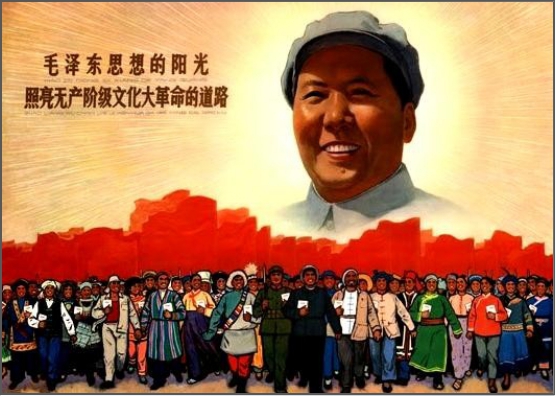
Mao Zedong (1893–1976) son of a peasant, was founder of the Chinese Communist Party (1921), Party Chairman (1945) and a founder and leader of the People‘s Republic of China (1949). When he was 13 years of age, his father had him leave school and return to work on a farm. Then, at 18 years, Mao left home to continue his education in Chengsha (the capital of Hunan). He was a prodigious reader with an interest in national reformers and revolutionaries.
After World War I, at the Treaty of Versailles, some traditionally Chinese territory was awarded to Japan, and Chinese activists protested their governments inability to protect national possessions.
The deification of Mao has been carried to lengths undreamed of by Hitler or Stalin, and it produces all sorts of pathological symptoms.
A small red booklet containing the Thoughts of Mao Tse-tung was printed in China in the hundreds of millions. Read in translation, it turns out to be the most famous collection of inspirational clichés. A few excerpts: “Unity, alertness, earnestness, and liveliness“, “Study diligently, and make progress every day“, “Be resolute, and unafraid of sacrifice” and “Surmount every difficulty to win victory“. The whole book is like that, and yet it is treated in China as a sort of combination prayer book and magic amulet.
Mao’s revolution in 1949 grew out of social protest— specifically out of the agonies of rural China. His “cultural revolution” from 1966 to 1976 was not inspired by social, economic or political protest.
―In China, Mao slogans, photos, posters and books became all the rage during the Cultural Revolution. Entire branches of industry were converted to produce cult objects. Factories producing red ink for the Little Red Book worked around the clock but still ran dry… At the height of the Cultural Revolution, people were fighting each other in the streets with machine guns and anti-aircraft artillery, all equally certain that they represented the true voice of Mao Zedong.
It seemed like chaos, but the Chairman prevailed, feeding a seemingly endless cycle of violence in which people scrambled to prove their loyalty to him and him alone. 5
Mao Tse-tung was responsible for the peacetime deaths of perhaps 70 million of his fellow Chinese. He instilled fear and obedience, achieving something Hitler and Stalin never did. Instead of shipping victims off to camps or Gulags, or torturing and murdering them in secret, he turned millions of his people against each other, by persuading them that spies, class enemies, counter-revolutionaries, and Mao-haters were everywhere.
ADOLF HITLER
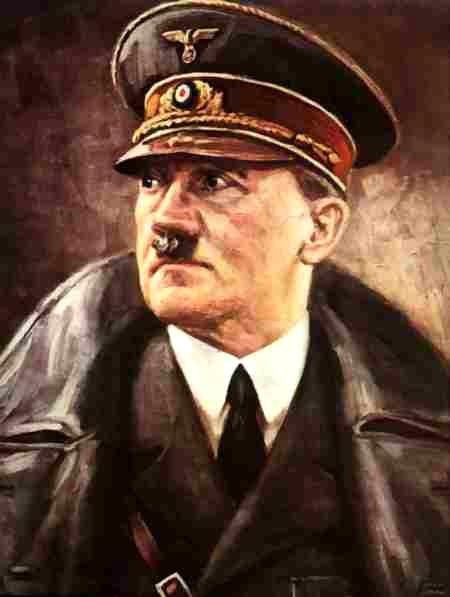
Adolf Hitler suffered from manic- depressive syndrome.
He confided completely in his only friend August Kubizek (1888-1956), who was both sensible and perceptive, and who quickly realized that there were two Hitler‘s, one remarkable for his ―ecstatic dedication and activity while the other had ―dangerous fits of depression.
After the Vienna Academy of Arts rejected twice admittance to Hitler as a student, he fell into a deep, paranoid, delusional depression which gave rise to anti-Semitic hatred. Unable to admit to himself that his talent might be insufficient, he blamed the Jewish members of the faculty and wrote to the academy‘s director: ―For this, the Jews will pay.
During the depressive stage, Hitler was despairing, indecisive, isolated, and unable to care for himself, to concentrate and to remember. He was hesitant, confused, despondent and apathetic, and had a phobic dread of horses, water and the moon. He washed his hands constantly because of his obsessive fear of germs. He had a phobic aversion of and paranoid delusions about Jews as contaminants, and compulsively tried to cleanse the world of them.
During the manic stage, he was egotistical, arrogant, grandiose, loquacious, aggressive, and irritable. He had grandiose Aryan delusions of omnipotence, invincibility and infallibility, violent mood swings, rages, racing thoughts and pressured speech. He was ruthless, willful, indifferent to the feelings of others, intolerant of criticism, and had a need to dominate others. His overwhelming emotional force and persuasiveness, both symptoms related to mania, were instrumental in ―convincing millions of his countrymen with his grandiose and paranoid delusions.
– Adolf Hitler was a master of propaganda, at once actor, choreographer, orator and self-publicist… He hired Heinrich Hoffmann as his personal photographer to produce images that projected sheer determination and fanatical willpower, showing a grim look, raised eyebrows, lips pressed together, arms resolutely folded. After 1933 Hitler worked on his broadcasting skills, making sure no one could escape his voice as loudspeaker pillars were erected in cities, mobile loudspeakers taken to small towns‖. 6
Hitler‘s hatred of Jews emanated from his paranoid, obsessive, and delusional fear of them. Paranoid visions of (nonexistent) Jews in the Kremlin hurling the Soviet hordes against Germany‘s eastern flank compelled him to invade Russia.
Starting World War II was an act of insanity. By invading Poland, Hitler turned what had been a Japanese plan of conquest of the Pacific into a world war. His irrational hatred of Poles formed part of his determination to conquer Poland. He also detested Jehovah‘s witnesses, Catholics, Gypsies, gays, Communists, journalists, judges, smokers, poets, Freemasons, and anybody who was not a vegetarian.
The paranoid delusions of manic-depressives lead to ―induced psychosis‖. Had Hitler succeeded in his grandiose ambitions he would have been on course to exterminate every human being, for ultimately everyone would have become his enemy. The same could be said about Joseph Stalin.
Hitler started a war on the pretext of leading their compatriots to glory, to increase his personal power and all leaving his country in ruins and millions of his countrymen dead.
Peace and security depend more on the actions of manic-depressives, than on the mere possession of weapons of mass destruction.
BENITO MUSSOLINI
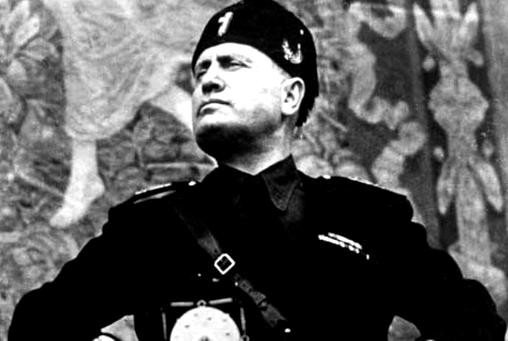
Benito Mussolini‘s (1883-1945) father Alessandro (1854-1910), was a socialist journalist and blacksmith, and his mother Rosa Maltoni (1858-1905) was a schoolteacher. The family was poor, they lived in two crowded rooms on the second floor of a small ruined building. As a child, Mussolini was disobedient, unmanageable, and aggressive, a bully at school and moody at home. He was expelled from grammar and high school for assaulting pupils with his penknife but he was intelligent and able to pass his final examinations without any difficulty. He obtained a teaching diploma, realized he was unsuited for such work and at 19, left Italy for Switzerland, jumping from job to job. He was a gifted orator who read many books on political philosophy by Immanuel Kant, Benedict de Spinoza, Friedrich Nietzsche, Georg Wilhelm Hegel, Karl Kautsky, and Georges Sorel. He impressed his companions as a potential revolutionary leader with an uncommon personality but was arrested several times. He returned to Italy in 1904, keeping busy with trade-union work, journalism, and extreme politics, which led to arrest and imprisonment.
During a period of freedom in 1909, he fell in love with the 16-year-old Rachele Guidi, the younger of the two daughters of his father‘s widowed mistress. She went to live with him in a damp, cramped apartment in Forlì and later married him.
After writing in a wide variety of socialist papers, he founded a newspaper of his own, La Lotta di Classe (―The Class Struggle‖). This paper was so successful that in 1912 he was appointed editor of the official Socialist newspaper, Avanti! (―Forward!‖), whose circulation soon doubled.
He strongly opposed Italy‘s participation in World War I but then changed his mind. He resigned from Avanti! and was expelled from the Socialist Party.
Financed by the French government and Italian industrialists, both of whom favored war against Austria, he assumed the editorship of Il Popolo d‟Italia (―The People of Italy‖), in which he unequivocally stated his new philosophy:
―From today onward we are all Italians and nothing but Italians‖. Now he preferred fascism over socialism.
Mussolini organized groups of fascist fighters (fasci di combattimento). In late 1920, encouraged by Mussolini, the Blackshirt squads attacked local government institutions and prevent left-wing administrations from taking power. The government, dominated by middle-class liberals, did little to combat this lawlessness, both through weak political will and a desire to see the mainly working-class left defeated.
In rallies, Mussolini‘s words were so dramatic, his metaphors well-suited, his gestures vigorous and repetitive.
―… he spent half of his time projecting himself as the omniscient, omnipotent and indispensable ruler of Italy… He was a master at projecting his own image, carefully studying certain gestures and poses. He rehearsed in Villa Torlonia, a vast neoclassical villa on a sprawling estate, which became his residence in 1925. In the evenings he would sit in a comfortable chair in a projection room to study every detail of his public performance. His theatrical gestures – head leaning halfway back, chin jutting sharply forward, rolling eyes – were calculated to give an impression of power and vitality”. 7
Mussolini suffered from cyclothymia with moods fluctuating from mild depression to hypomania and back again, from hypomania characterized by persistent disinhibition and mood elevation (euphoria), manic-depressive or bipolar syndrome, a serious mental illness in which a person experiences extreme and fluctuating changes in mood, energy, activity, and concentration or focus. In manic episodes, he felt very happy, irritable, or ―up,‖ and there was a marked increase in activity level. In depressive episodes, he felt sad, indifferent, or hopeless with a very low activity level.
During the manic phase, his mental capacity and memory remained normal with preserved histrionic and theatrical capacities. He was also affected by a very serious inferiority complex, he felt inferior to others which drove him to overcompensate with spectacular achievements. It may have arisen from parental attitudes and upbringing, disapproving, negative remarks and evaluations of behavior emphasizing mistakes and shortcomings or from physical defects such as height (he was only 5 feet 5 inches tall) or being bald. Mussolini became a dictator to feel superior to others as he attempted to free himself from this complex. The psychoanalyst Alfred Adler (1870-1937) stated rulers are not always strong men; it‘s those they rule who are weak, millions of naive and superficial followers.
His speeches were widely reproduced. At a gathering of 40,000 Fascists in Naples on October 24th 1922, he threatened, ―Either the government will be given to us, or we will seize it by marching on Rome.‖ The March on Rome really began and on October 31st King Victor Emmanuel III invited him to become Chancellor. His shrewd calculations and astute opportunism had helped him to achieve his goal at 39 years of age.
Italy‘s fragile democratic system was abolished in favour of a one-party state. Opposition parties, trade unions, and the free press were outlawed. Free speech was crushed. A basic slogan proclaimed that Mussolini was always right (Italian: ―Il Duce ha sempre ragione‖). ―Duce‖ is an Italian title, derived from the Latin word dux “leader”. Yet, he was hailed by public figures worldwide as a genius and a superman. His achievements were considered little less than miraculous. He had carried out his social reforms and public works without losing the support of the industrialists and landowners; he had even succeeded in coming to terms with the papacy.
Mussolini might have remained a hero until his death had not his callous xenophobia and arrogance, his misapprehension of Italy‘s fundamental necessities and his dreams of empire, led him to seek foreign conquests in Ethiopia and Somalia.
Both Hitler and Mussolini were gigantic egomaniacs who passionately believed themselves to have been sent by Providence to fulfill important roles in world history. They had no regard for human life and no remorse in sacrificing the lives of millions to fulfill their megalomaniacal obsessions.
There were, of course, many differences between the two dictators. For one thing, Mussolini was very much a ladies’ man who cheated on his wife on numerous occasions. Hitler, on the other hand, was too fanatically devoted to his own mission as leader of the National Socialist revolution to develop any acceptable emotional life. Mussolini was less ideologically driven than Hitler.
Despite his background as a socialist, Mussolini was less radical than Hitler. Fascism as it developed under “Il Duce” was generally a reactionary ideology used by conservative forces to counter the growing threat of anarchism and communism. National Socialism, on the other hand, envisaged a complete transformation of society along racial lines. This reflected Hitler’s monomaniacal obsession with race, an obsession not shared by Mussolini.
In CONCLUSION, in spite of all the criminal acts against humanity by dictators, hope must prevail, as Anne Frank (1929-1945), a victim of the Shoah wrote in her ―Diary‖ at age 13: ―It‟s difficult in times like these: ideals, dreams and cherished hopes rise within us, only to be crushed by grim reality. It‟s a wonder I haven‟t abandoned all my ideals, they seem so absurd and impractical. Yet I cling to them because I still believe, in spite of everything, that people are truly good at heart.‖
Let‘s, however, remember some of the GENOCIDES that were perpetrated:
- the Holocaust, the killing of between 5 and 6 million European Jews by Nazi Germany during
World War II; - the genocide of the Armenians in Turkey in1915-1916;
- the “auto genocide” in Cambodia between 1975 and1979;
- the genocide in Rwanda in 1994 that killed over 800,000 in a hundred days;
- the disappearances and mass killing in Argentina, mainly between 1976 and1979;
- the killing of over 1300 individuals and displacing over 300,000 others in Kenya between December 2007 and February
The differentiation between in-group and out-group, us and them, tends by itself to give rise to a favoring of the in-group and relative devaluation of the out-group and discrimination against its members. Devaluation of individuals and groups, by creating negative stereotypes or images, makes it easier to harm the outer-group. At times devaluation of the potential victims is the result of a newly emerging ideology that designates a group as the enemy.
- In Germany, there had been a long history of anti-Semitism, with periods of intense mistreatment of Jews.
- In Turkey, deep-seated cultural devaluation of and discrimination against Armenians had existed for centuries.
- In Rwanda, there was intense hostility by Hutus toward Tutsis who were referred to as cockroaches, as a result of prior dominance by Tutsis.
- In Kenya prior to the 2007/2008 ethnic violence there was ethnic ‗bashing‘ of one community in political rallies culminating in the slogan 41 against 1 which ignited the pogroms.
In the face of persistently difficult life conditions, already devalued out- groups are further devalued and scapegoated. Diminishing others is a way to elevate the self. Leaders and elites often propagate scapegoating and destructive ideologies, use propaganda against devalued groups and “enemies,” and create paramilitary groups that become instruments of violence.
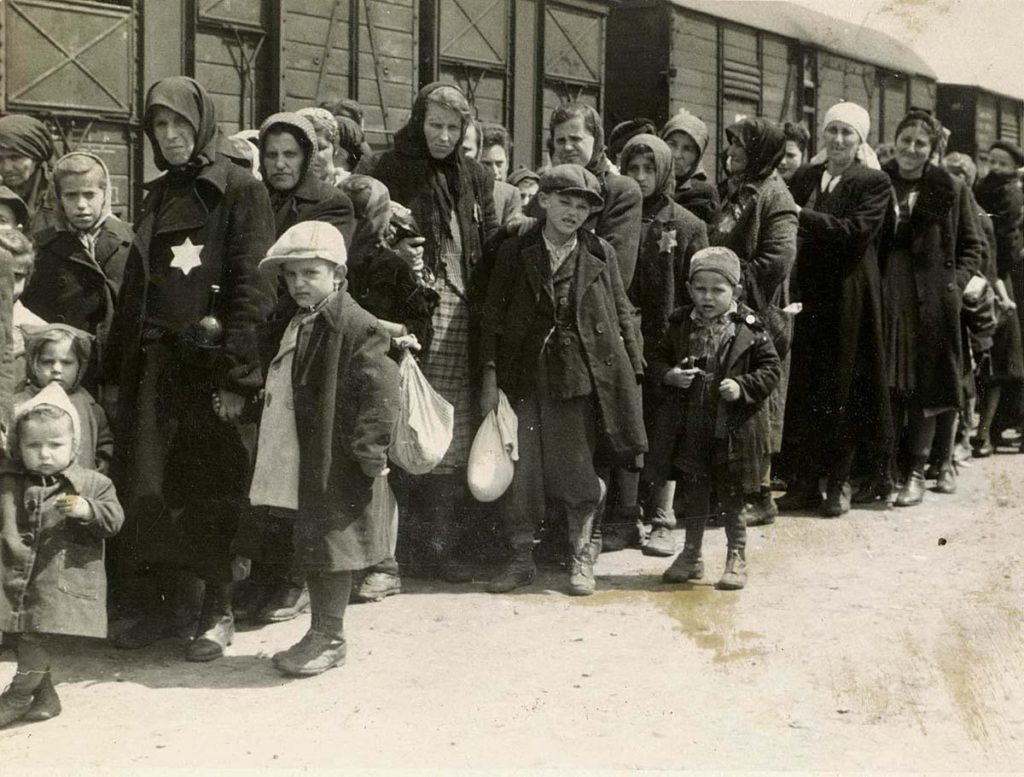
Women and children on the Birkenau arrival platform known as the “ramp”. The Jews were removed from the deportation trains onto the ramp where they faced a selection process, some were sent immediately to their deaths, while others were sent to slave labor. Birkenau was a concentration camp near Auschwitz (Poland), active from 1941 to 1945.
When there is a conflict between moral values and other motives, people can lessen the conflict by replacing the moral values with other values (―moral equilibration) that are either less stringent or not a moral value at all. For instance, the Nazis replaced respect for the lives of certain people (Jews) with the values of racial purity, obedience and loyalty to their the Fuhrer.
Francesco Gallo, M.D., Psychiatrist
REFERENCES
- Allen Rachael, ―Stalin and the Great Terror: Can Mental Illness Explain His Violent Behavior‖, Guided History (Boston University), Boston MA, April 23th 1971.
- DikotterFrank, ―The Great Dictators‖, History Today, vol. 69, October 10, 2019.
- ElsayedYasser Abdel Razek ―Gods never fall sick or die: dictatorship and mental health in Egypt‖ Okasha Institute of Psychiatry, Faculty of Medicine, Ain Shams University, Cairo (Egypt), March 2nd 2011
- FallonJames, ―The Mind of a Dictator‖, ―Psychology Today‖ (on-line), November 11th 2011
- GilsonDave, ―The CIA‟s Secret Psychological Profiles of Dictators and Word Leaders are amazing‖, Mother Jones (e-magazine), February 1st 2015
- Goldman Jason G., ―The Psychology of Dictatorship: Kim Jong II‖, The Thoughtful Animal, December 19th 2011.
- Hughes Ian, ―How to be a dictator: timely look at narcissistic authoritarianism‖, The Irish Times, September 7th 2019.
- JayatungeRuwan M., ―Joseph Stalin: Psychopathology of a Dictator‖, Colombo Telegraph (on-line), May 23rd 2014.
- Norrholm Seth Davin and Hunley Samuel, ―The Psychology of Dictators: Power, Fear and Anxiety‖, www.anxiety.org, August 1st 2016.
- Senise Tommaso, ―Mussolini e Hitler dal punto di vista psichiatrico”, Biblioteca de ―Il Cervello‖, Napoli, 1947
Notes:
- Jason G. Goldman, “The Psychology of Dictatorship: Kim Jong II”, The Thoughtful Animal, December 19th 2011. ↩
- Gilson Dave, “The CIA’s Secret Psychological Profiles of Dictators and Word Leaders are amazing”, Mother Jones (e- magazine), February 1st 2015. ↩
- Frank Dikotter, “The Great Dictators”, History Today, vol. 69, October 10, 2019, p.73. ↩
- Frank Dikotter, “The Great Dictators”, History Today, vol. 69, October 10, 2019, p.70. ↩
- Frank Dikotter, “The Great Dictators”, History Today, vol. 69, October 10, 2019, p.70 ↩
- Frank Dikotter, “The Great Dictators”, History Today, vol. 69, October 10, 2019, p.69-70. ↩
- Frank Dikotter, “The Great Dictators”, History Today, vol. 69, October 10, 2019, p.68. ↩







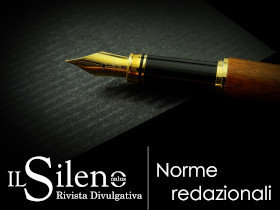
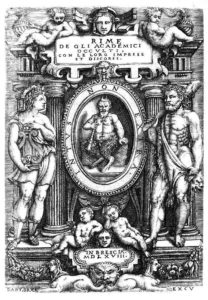
 Sostieni "Il Sileno"
Sostieni "Il Sileno"